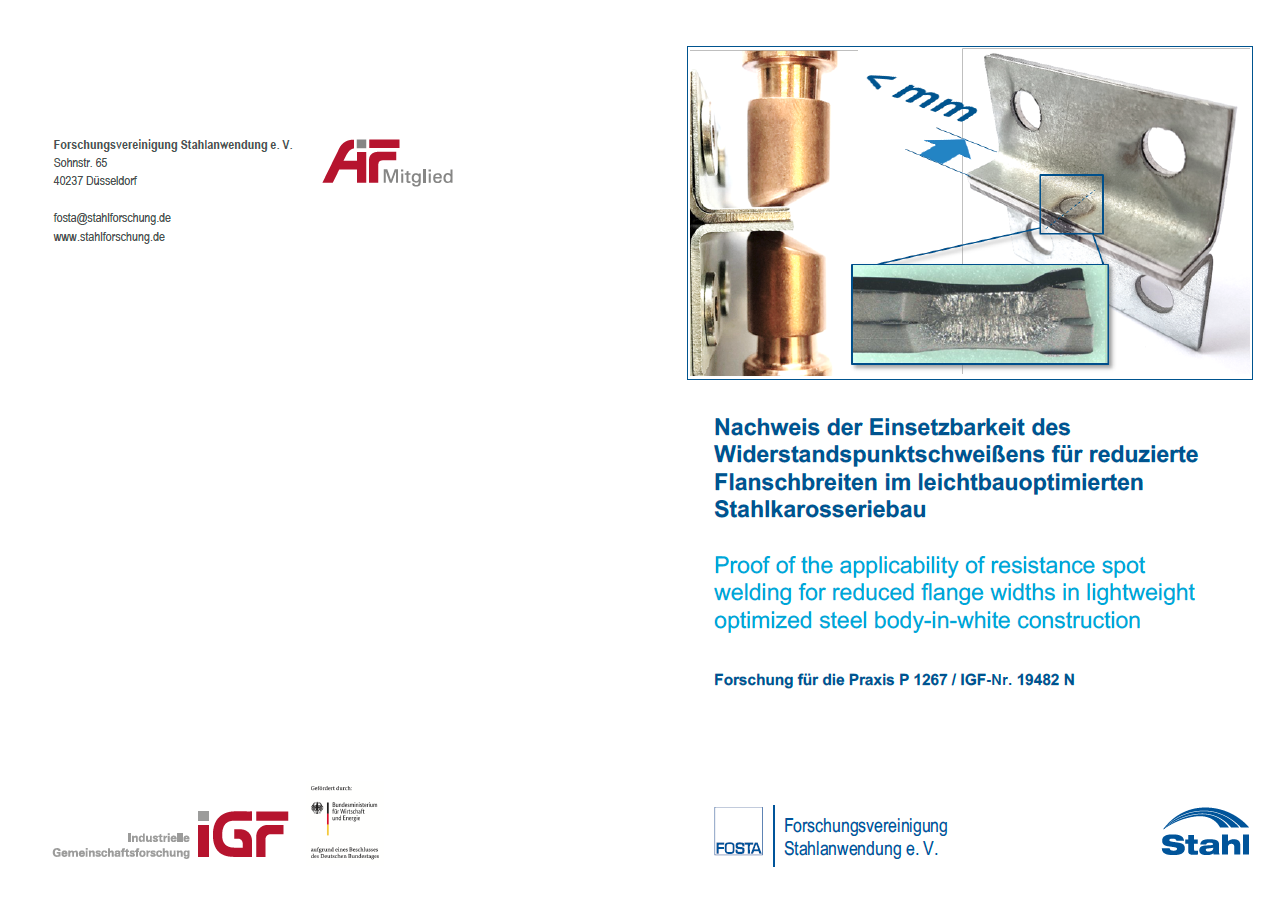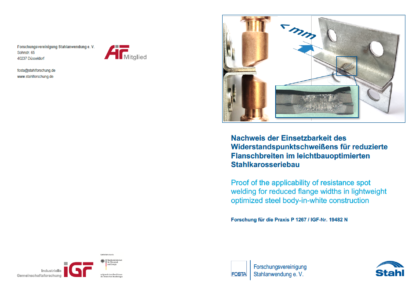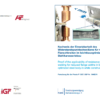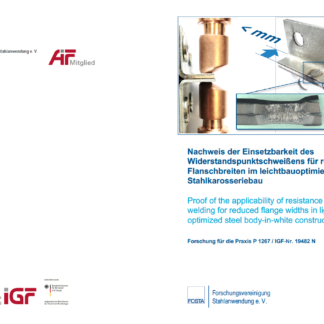Description
P 1267 – Proof of the applicability of resistance spot welding for reduced flange widths in lightweight optimized steel body-in-white construction
Lightweight construction concepts made of modern high-strength steel materials play an important role in the realization of resource-saving, affordable mobility. In order to increase customer benefits (door entry, “slim A-pillar”, etc.) and reduce weight, there is also a growing interest in body construction in reducing the flange widths that are common today. The reliable and cost-efficient joining of components made of high-strength steels with educed flange widths using the highly efficient resistance spot welding process widely used in the sheet steel processing industry represents a challenge. While OEMs and Tier 1 suppliers can use investment-intensive technologies such as laser beam welding, SMEs lack the necessary user information for the reliable joining of narrow flanges using resistance spot welding technology.
By means of experimental and numerical investigations on joining tasks close to reality for car body construction beyond the current state of the art, the applicability of resistance spot welding for reduced flange widths was systematically investigated in this project. At the same time, the boundary conditions to be observed and economic compromises for a process capability suitable for production were determined. Against the background of the application-oriented project objective, experiments were carried out under near-production conditions in the form of a systematic investigation of influences and disturbance variables in addition to investigations under “idealized” laboratory conditions. The advancing development of ultra-high-strength highperformance steels (3rd generation steels) was also taken into account by means of
targeted observation.
In order to increase the scientific and technical process knowledge of the RSW of reduced flange widths, e.g. with regard to temperature distribution and welding lens growth, a 3D welding process simulation was set up with the help of freely available software. The results can be used directly by users, for example to determine optimization potential, e.g. of alternative electrode cap geometries. The results and methods generated in the project thus help to save cost- and timeintensive experimental validation in the company and to offer corresponding lightweight products on the global markets. The derivation of user-oriented guidelines as well as design and manufacturing instructions on the basis of the research results obtained supports a broad spectrum of users, especially from the SME sector, in the realization of the joining tasks they are faced with and thus increases the overall competitiveness of SMEs.
Published in:
August 2020
Authors:
Ch. Böhne M.Sc., Univ. Prof. Dr.-Ing. G. Meschut




